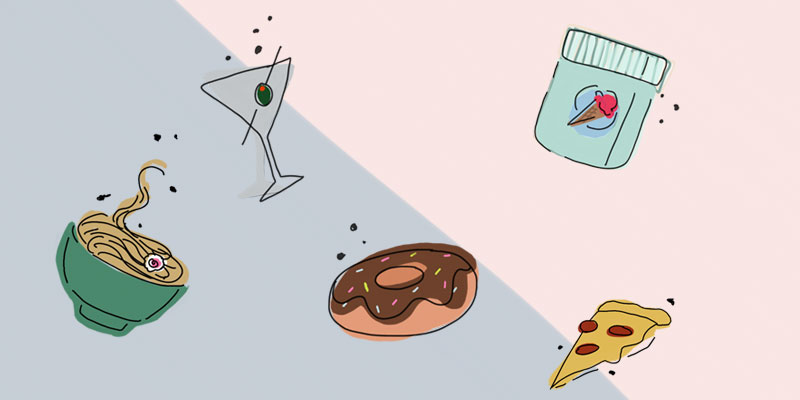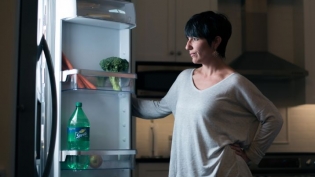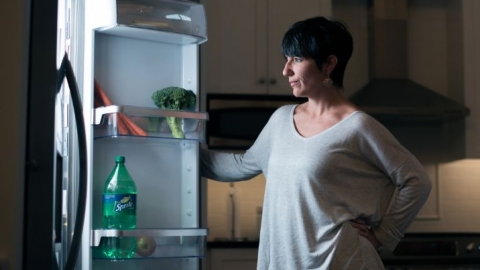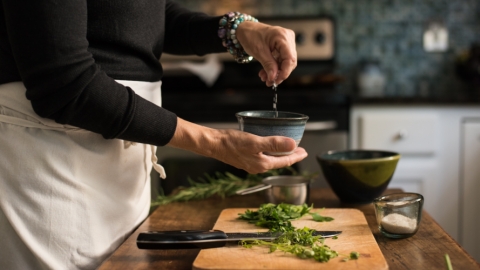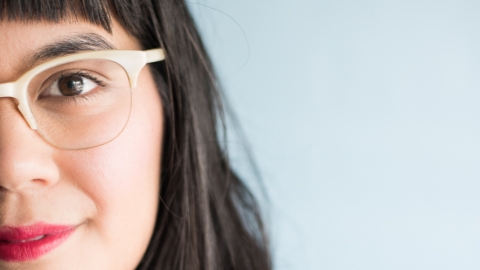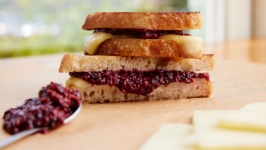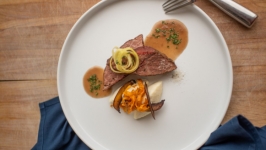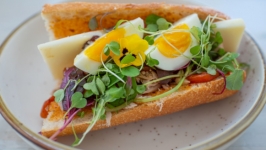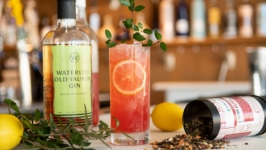You Eat What You Are?
A year ago, the internet erupted with controversy after Pepsico's previous President Indra Nooyi announced the upcoming launch of less-messy, less-crunchy Lady Doritos. The laughable idea was forcibly shut down by sarcastic tweets and ludicrous Saturday Night Live skits. Still, it left a memorable question mark over the way women and men consume food. Are there lady-friendly chips? Do men and women actually eat all that differently?
According to scientific research, the answer to the latter is yes. Data shows that women gravitate toward healthier menu options, eat smaller bites and consume less meat, cheese and fried foods. In contrast, men eat faster, with bigger bites and fewer reservations about the nutritional value of their fare. By biological measure, women generally have fewer caloric needs and less dietary wiggle room than men to consume foods outside of their nutritional demands.
This information points out biological differences, but it doesn’t explain the gender-normative expectations that rule our food culture today. From the days of hunters and gatherers, there were once clear, evolutionary explanations for our disparities in diet. From supermarket shelves and drive-thru menus, to the foodie blogs and Instagram accounts we follow, the food in front of us today is now crafted and marketed toward whether we are men or women.
This has as much to do with consumerism as actual craving. Each day, we’re fed as many stories as we are meals; culturally ingrained narratives about what makes men masculine and what makes women feminine. Stories about which foods are healthy, sophisticated, manly or gross. Our adaption to these stories is less submission than it is inundation. Men do not hail a white flag before bellying up to a steak. Women do not throw up their hands in defeat before consuming cupcakes or wine.
“I was at Publix the other day,” says Calli Webb, author of Calli Marie Bakes and Partner and Manager of BREW in Five Points, “and I saw mixed nuts targeted toward women.” The small round jar offers almonds, cashews, chocolate-covered raisins, and cranberries, with a pink ‘Women’s Health’ label on its front. “I just thought, ‘What the hell?’”
Webb is known for her decadent, beautiful cakes and a book full of savory, sweet and out-of-this world pastry recipes. She says that aside from that one nut ad, she doesn’t ever see food separated by sex. While sugar-free, low-fat, no-mess food products are still marketed more heavily to women, the saturation of gender stereotypes in the food we eat decreases when we move from national to local food markets.
“We have people of all genders ordering any food, that could be straight-up pastries or healthier vegan options. We also have customers who don’t confine themselves to a gender, eating whatever they want,” says Webb.
While marketing campaigns create curated storylines of Lady Doritos and women’s health nut mixes, the stories of how we actually eat may be entirely different. They are the hearty meat loaves from your mom’s oven and the salty olives that overflow your grandmother’s martinis. They are the cookies your dad orders at the coffee shop and the doughnuts your cubicle-mate brings to the breakroom. They are the brewery bachelorette parties and the Cherry Garcia ice cream pint hidden in a boyfriend’s freezer.
They’re the foods we love to eat, and the storylines that matter most.
How did those two storylines become so separated? One is manufactured by marketing teams and sold in drive-thrus and supermarkets. The other exists in our everyday lives — fed by our community and the food systems created around them. They’re rich with local people and local foods, far removed from the hunter-gatherer survival that sparked our dietary differences in the first place.
“It does seem like women are more in touch and intuitive with their bodies. They don’t want to feel bad after they eat,” says Mariah Goelz, co-owner of Southern Roots Filling Station. The menu at her King Street shop is famous for its vegan fare: salads, grain bowls and tofu sandwiches.
“But,” she adds, “a lot of our most committed regular customers are men.” There are disparities in the way men and women eat food, but they exist in nuances, not hyperboles.
“People who decide to eat local are asking different questions – like where is this food coming from? What is it made of?” explains Webb. “When you choose to eat at local places, you’re less likely to be focused on gender or calories. It’s more about how the food is made and what it means to you.”
Evolution may have dictated the pace and volume that men and women eat, but it doesn’t do our grocery shopping or decide our dinner order. Whether they fit women’s smaller bite sizes or met our caloric needs, Lady Doritos didn’t make it to shelves. Each day, we’re fed as many stories as we are meals. It’s important to remember that we are what we eat.


